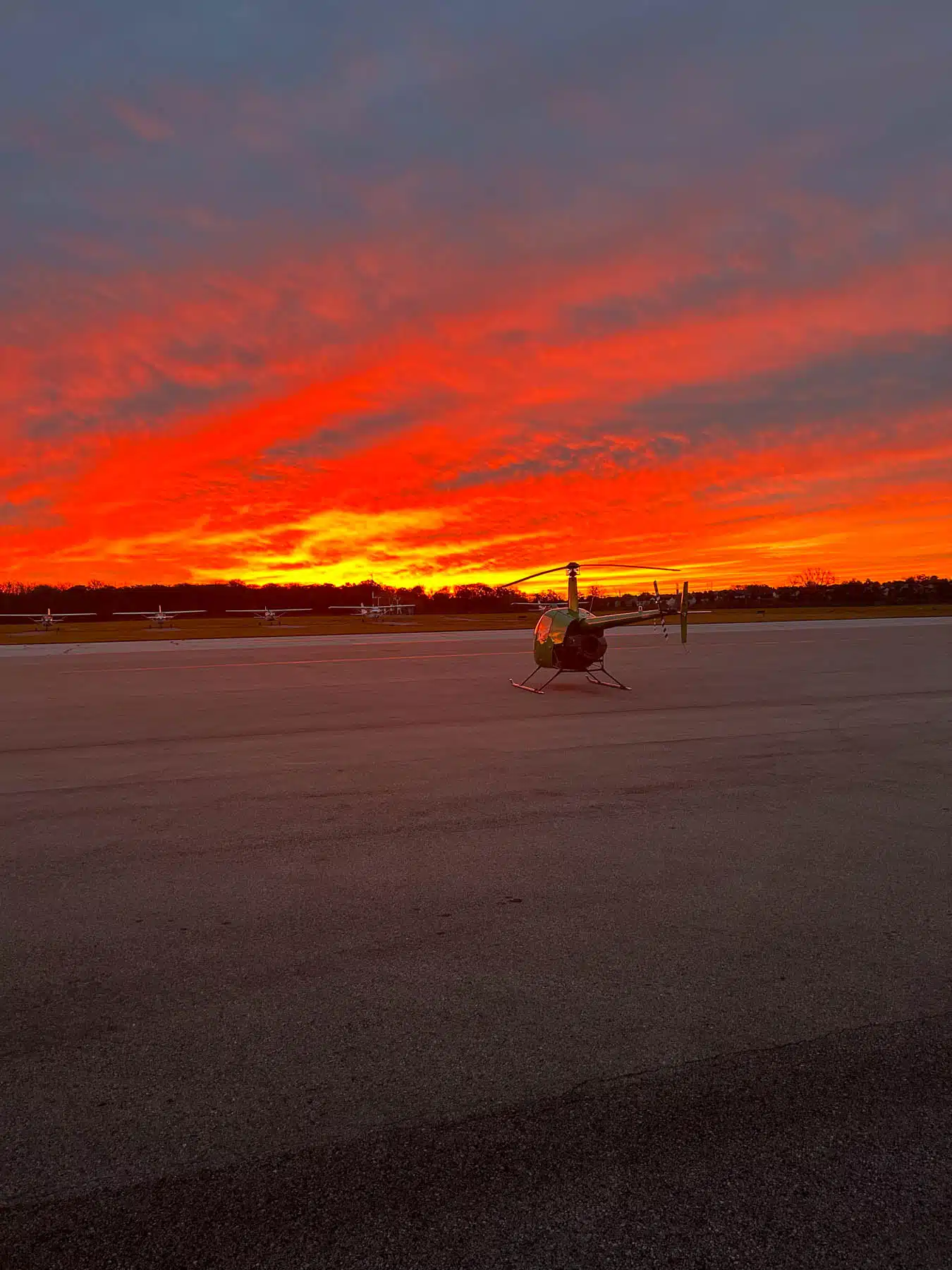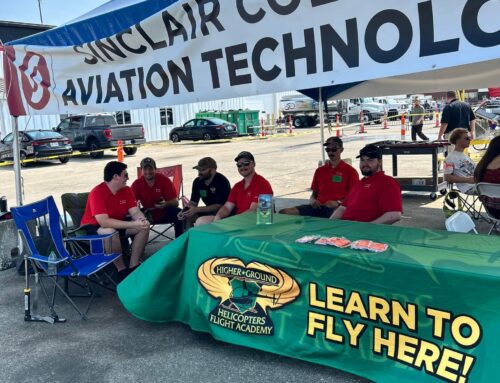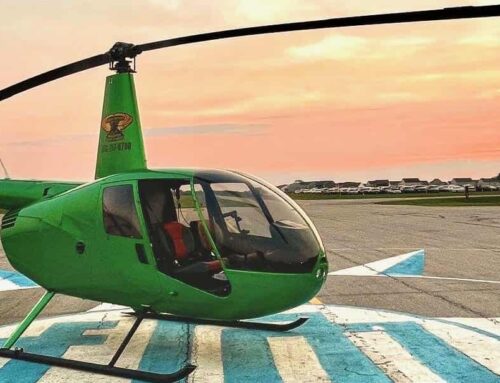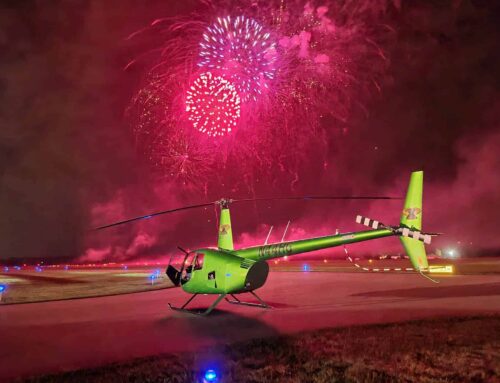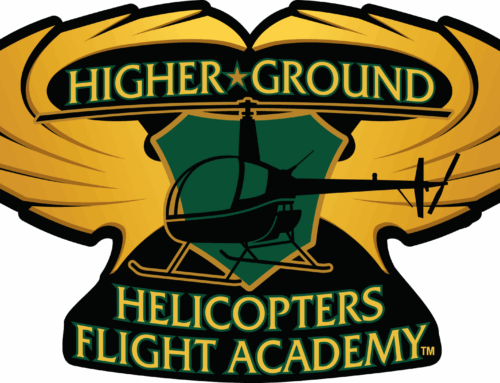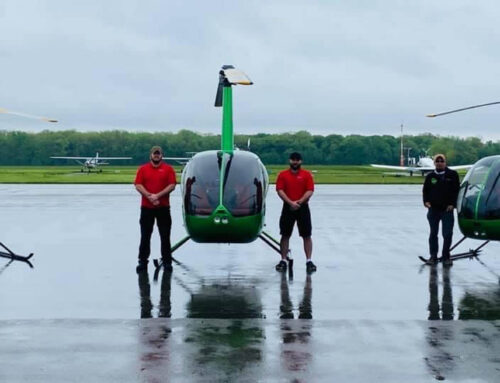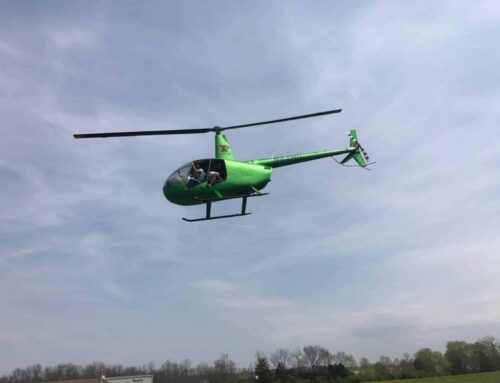The first practical helicopters started appearing around the 1940s, according to Britannica, and the technology has made leaps and bounds since then.
You might be wondering, “How high do helicopters fly?” While helicopters may not match the cruising altitudes of commercial airplanes, their ability to reach impressive heights makes them quite versatile.
Understanding the factors that influence helicopter altitude limits can help you appreciate the power and capability of these aircraft. If you’re considering a future in aviation, learning how helicopters operate at different altitudes is critical. Read on to learn more.
The Very Basics of Helicopter Flight and Altitude
Helicopters are different from airplanes in many ways, particularly in how they generate lift. Instead of wings, helicopters use large rotating blades called rotors. The rotors push air down, allowing the aircraft to lift off vertically.
Due to this design, helicopters can hover, turn in place, and access areas where airplanes can’t land. However, helicopters are still limited by certain physical and mechanical factors when it comes to how high they can fly.
One of the primary limitations is air density. As a helicopter climbs higher, the air becomes thinner, which means there’s less oxygen available for the engine and less air for the rotor blades to push against. A reduced lift makes it harder for the helicopter to continue climbing.
Engine performance also declines at higher altitudes, especially in piston-powered aircraft, which rely on air intake for combustion. In addition, the total weight of the helicopter, including passengers and cargo, affects how much power is needed to reach certain heights.
Understanding How High Do Helicopters Fly Based on the Ceiling Limit
Every helicopter has a maximum altitude it can reach under specific conditions, otherwise known as the helicopter ceiling limit.
The service ceiling is the altitude at which the helicopter can still climb, but only at a very slow rate. It tends to clock in at around 100 feet per minute. Any higher and it becomes both unsafe and impractical.
The absolute ceiling is the highest point the helicopter can reach, where the lift generated by the rotor is just enough to keep the helicopter in the air without climbing. At this altitude, the helicopter can hover, but it can’t go any higher.
Most civilian helicopters have a service ceiling between 10,000 and 14,000 feet. For instance, the Robinson R44, a common helicopter used in training, has a service ceiling of around 14,000 feet.
The Bell 206 JetRanger, which is used in both civilian and light commercial operations, can reach a similar height. More powerful helicopters, especially those with turbine engines, can fly higher. Some models designed for search and rescue or military operations are capable of reaching over 20,000 feet.
Appreciating the Highest Helicopter Flight on Record
In the early 70s, a French pilot named Jean Boulet flew an Aerospatiale SA 315B Lama to an altitude of almost 41,000 feet above sea level. The extraordinary feat was made possible by a combination of:
- Ideal weather conditions
- A lightweight airframe
- precise planning
Still, this altitude is well beyond what most helicopters can achieve in everyday operations.
Typical Helicopter Flying Heights
The altitude at which a helicopter flies depends largely on the mission it’s performing. News helicopters, traffic choppers, and air ambulances usually operate from around one thousand to several thousand feet above the ground. An altitude range like this allows them to stay clear of obstacles while remaining low enough for effective observation or rapid deployment.
Helicopters used in construction, firefighting, or agricultural work often fly even lower. Such operations rely on the helicopter’s ability to hover in place or move with precision over a specific area.
On the other hand, helicopters used in mountain rescue or high-altitude transport may need to operate near their service ceiling, especially in rugged terrain.
Since helicopters can adjust their flying height with great precision, they’re incredibly useful in scenarios where fixed-wing aircraft would be limited. Their rotorcraft capabilities make them ideal for everything from emergency medical transport to law enforcement support.
Why Altitude Matters for Helicopter Pilots
Altitude awareness is a critical part of helicopter flight training. Pilots need to understand how different elevations affect performance, safety, and maneuverability. At high altitudes, helicopters require more power to maintain lift, which affects fuel efficiency and limits flight time. Pilots must also be aware of:
- Weather conditions
- Wind speed
- Terrain changes
Understanding helicopter flying heights is not just about learning how high you can go. It’s about knowing how to fly safely and effectively at the right height for the task at hand.
Train at Higher Ground Helicopters Flight Academy
If you’re ready to explore the world of helicopter aviation, the first step is finding the right school. Higher Ground Helicopters Flight Academy offers the professional training you need to succeed in this exciting field. As an FAA Part 141 flight school, Higher Ground provides structured programs that meet the highest industry standards.
Through a partnership with Sinclair Community College, students can get an associate or bachelor’s degree while completing their flight training. An educational path of this nature not only strengthens your credentials but also makes you eligible for potential financing or grants.
At Higher Ground, students receive hands-on instruction from experienced professionals using a modern fleet of training helicopters. You’ll learn the following and more:
- How to fly in a variety of conditions
- Ways to develop dependable decision-making skills
- Maintaining the confidence needed to manage aircraft safely in different situations
Whether your goal is to fly commercially, support emergency services, or explore helicopter operations in remote environments, Higher Ground Helicopters will prepare you for success. You’ll gain a deep understanding of maximum helicopter flight, how to manage helicopter ceiling limits, and how to operate with precision and skill.
It’s Time to Fly High Yet Safely
Has anyone ever asked you, “How high do helicopters fly?” With the above information, you can tell them all about it.
Higher Ground Helicopters Flight Academy is Ohio’s only FAA-approved 141 helicopter flight training facility. Best of all, we accept VA Disability Benefits and the GI Bill®. Students appreciate being able to become a certified instructor in 18 months or less.
Are you ready to let your dreams fly? If so, don’t wait to sign up for the Higher Ground Helicopters Flight Academy today.

